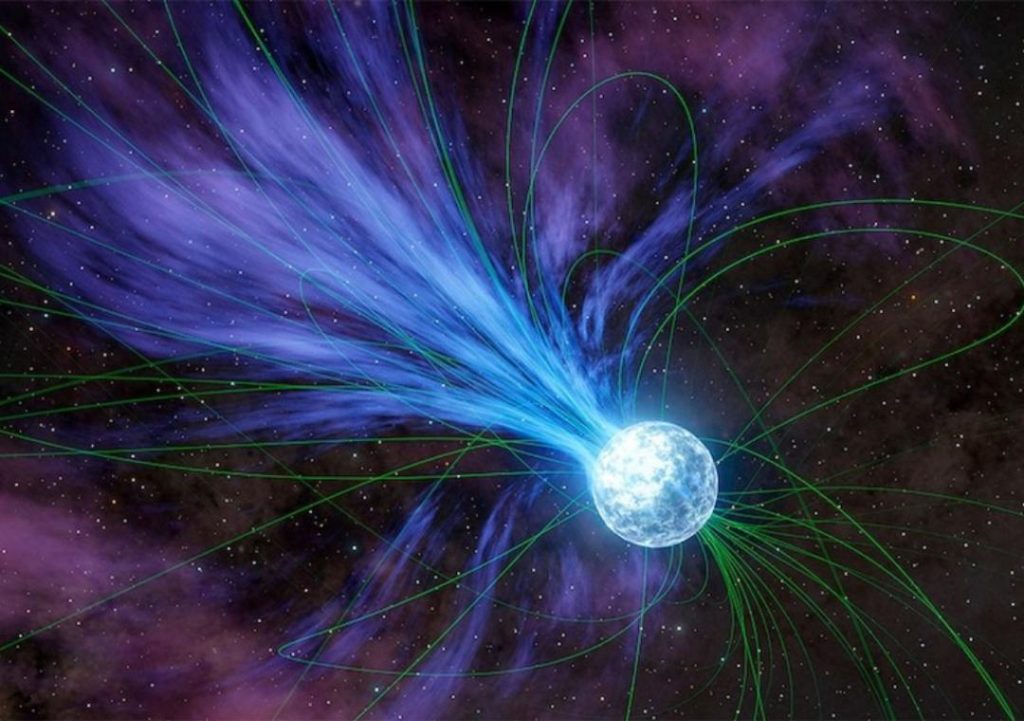
Gold & Platinum Created through Neutron Stars’ Explosions: Study
For centuries, humans have been fascinated by the origins of precious metals like gold and platinum. These valuable resources have played a significant role in human history, from ancient civilizations to modern-day economies. While we have long known that gold and platinum are naturally occurring elements, the process by which they were formed has remained a mystery. Recently, a team of scientists led by Columbia University student Anirudh Patel has made a groundbreaking discovery that sheds light on the origins of these precious metals.
According to the study, magnetars – or highly magnetized neutron stars – played a crucial role in the creation of gold and platinum through a cosmic event that occurred over 20 years ago. The team’s research suggests that these magnetars exploded and released flares that contained these elements, casting new light on the processes that shape our universe.
The Discovery
The study, which was published in The Astrophysical Journal, used data from NASA’s NuSTAR (Nuclear Spectroscopic Telescope Array) to analyze the light emitted by a magnetar that exploded in 2004. The team discovered that the explosion released a significant amount of gold and platinum, as well as other elements like titanium and iron.
To understand how this process works, it’s essential to first understand what magnetars are. Magnetars are a type of neutron star that is characterized by their extremely strong magnetic fields. These fields are so powerful that they can cause the stars to emit intense radiation and even trigger massive explosions.
The Process of Creation
The process by which gold and platinum are created through neutron star explosions is complex and involves several stages. First, the magnetar’s strong magnetic field causes it to heat up and emit radiation. This radiation interacts with the surrounding environment, creating a hot and dense plasma that is rich in heavy elements like gold and platinum.
As the plasma cools, it condenses into droplets that are rich in these elements. These droplets are then expelled from the magnetar through a process known as supernova-like explosion. This explosion releases a massive amount of energy, causing the surrounding environment to heat up and destroy any nearby matter.
Frequency of Explosions
The team’s research suggests that these types of explosions occur relatively frequently in the universe. In the Milky Way galaxy, they happen approximately once per decade, while across the observable universe, they occur annually.
To put this into perspective, the Milky Way galaxy contains over 100 billion stars, and each star has the potential to become a magnetar. This means that there are potentially hundreds of millions of magnetars in the Milky Way galaxy alone, each with the potential to create gold and platinum through neutron star explosions.
Implications for Our Understanding of the Universe
The discovery of gold and platinum creation through neutron star explosions has significant implications for our understanding of the universe. It suggests that the origins of these precious metals are not limited to terrestrial processes like plate tectonics and geological activity, but are instead tied to cosmic events that shape the universe.
This discovery also opens up new avenues for research, including the possibility of detecting and studying these magnetars and their explosions. By studying these events, scientists can gain a better understanding of the processes that shape the universe and potentially uncover new secrets about the origins of the elements that make up our world.
In Conclusion
The discovery of gold and platinum creation through neutron star explosions is a groundbreaking finding that has significant implications for our understanding of the universe. The team’s research has shed new light on the origins of these precious metals and has opened up new avenues for research and discovery.
As we continue to explore the universe and uncover its secrets, we may yet discover that the origins of gold and platinum are even more complex and fascinating than we ever could have imagined.






